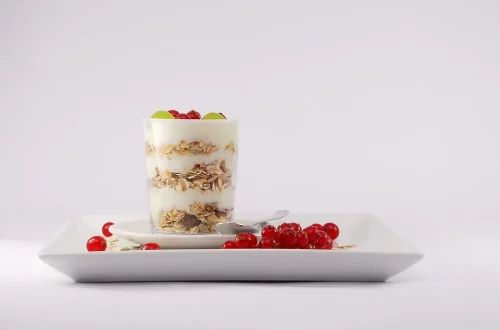
Can Guinea Pigs Eat Banana Peels Safely and Healthily?
Guinea pigs are adorable, social creatures that make wonderful pets. They are known for their playful nature and charming personalities, which endears them to many animal lovers. One of the most important aspects of caring for a guinea pig is providing a balanced and nutritious diet. Pet owners often seek to enrich their pets’ diets by offering various fruits and vegetables. However, not all foods are safe for guinea pigs, and understanding what they can and cannot eat is crucial for their health and well-being.
As guinea pig owners explore different dietary options, they may wonder about the safety and health benefits of certain foods, including banana peels. While bananas themselves are a popular treat among many small animals due to their sweet taste, the peels often raise questions. Are they safe to feed guinea pigs? Do they provide any nutritional value, or could they cause harm? These are important considerations for any pet owner who wants to ensure they are providing their furry friends with the best possible care.
In this article, we will delve into the intricacies of feeding guinea pigs banana peels, examining the potential benefits and risks, as well as offering guidance on how to incorporate them into a guinea pig’s diet safely.
Understanding Guinea Pig Nutrition
To determine whether banana peels are a suitable addition to a guinea pig’s diet, it is essential to understand their nutritional needs. Guinea pigs are herbivores, which means they thrive on a diet primarily composed of grass hay, fresh vegetables, and a small amount of fruit. Their digestive system is specifically designed to process high-fiber foods, making hay a staple in their diet.
In addition to fiber, guinea pigs require vitamin C, an essential nutrient that they cannot synthesize on their own. Unlike many other animals, guinea pigs need to obtain this vitamin from their diet. Fresh vegetables like bell peppers, leafy greens, and certain fruits can provide adequate vitamin C levels. It’s important to note that guinea pigs cannot eat all fruits and vegetables; some are too high in sugar or contain harmful compounds.
When considering banana peels, one must analyze their nutritional profile. Banana peels are rich in fiber, potassium, and other vitamins. The fiber content can be beneficial for guinea pigs, promoting healthy digestion. However, the peels also contain higher levels of sugar compared to other vegetables, which can pose a risk if fed in excessive amounts.
Moreover, the texture of banana peels is tough and fibrous, which may be challenging for some guinea pigs to chew. Therefore, while banana peels can be safe in moderation, they should never replace the primary components of a guinea pig’s diet, such as hay and fresh vegetables.
Overall, understanding the dietary requirements of guinea pigs is crucial to making informed decisions about their food. This knowledge enables pet owners to provide a balanced diet that supports their pet’s health, ensuring they thrive as happy and healthy companions.
Benefits of Feeding Banana Peels
Despite the concerns surrounding banana peels, there are potential benefits to incorporating them into a guinea pig’s diet. One of the primary advantages is their high fiber content. Fiber is vital for maintaining a healthy digestive system in guinea pigs. It aids in preventing gastrointestinal issues such as bloating and constipation, which can lead to serious health problems if not addressed.
Banana peels are also a good source of potassium, an essential mineral that plays a crucial role in various bodily functions, including muscle contraction and nerve function. This can be particularly beneficial for active guinea pigs that require adequate nutrition to support their energy levels.
Additionally, banana peels contain antioxidants and vitamins, including vitamin B6 and vitamin C. While guinea pigs require a direct source of vitamin C, the additional vitamins found in banana peels can contribute to their overall health when fed as part of a varied diet.
Moreover, the act of introducing different foods can stimulate a guinea pig’s interest in their diet. Guinea pigs are naturally curious animals, and offering them a variety of fresh produce, including banana peels, can encourage them to explore new flavors and textures. This can be beneficial for their mental stimulation and overall well-being.
However, it’s important to remember that moderation is key. While banana peels can offer several benefits, they should only be given as an occasional treat rather than a regular part of their diet. This will ensure that guinea pigs receive a balanced intake of nutrients without overloading on sugars or other potentially harmful compounds.
In summary, banana peels can provide certain health benefits for guinea pigs, but they should be offered in moderation and alongside other nutritious foods to create a well-rounded diet.
Potential Risks of Feeding Banana Peels
While there are benefits to feeding banana peels to guinea pigs, there are also potential risks that pet owners need to consider. One of the most significant concerns is the sugar content found in banana peels. Although the sugar present in banana peels is natural, it can still contribute to obesity and related health issues if fed in large quantities. Guinea pigs are prone to weight gain, which can lead to serious health problems like diabetes and heart disease.
Another risk associated with banana peels is the possibility of pesticide residue. If the bananas are not organic, the peels may contain harmful chemicals that could pose a risk to your guinea pig’s health. It’s essential to wash the peels thoroughly to minimize exposure to any pesticides or contaminants. In some cases, it may be safer to avoid feeding banana peels altogether if you’re unsure of their origin or if they have not been properly cleaned.
Furthermore, the tough texture of banana peels can be a challenge for some guinea pigs. If a guinea pig struggles to chew or digest the peels, it could lead to choking or gastrointestinal discomfort. Pet owners should monitor their pets closely when introducing any new food and be aware of their chewing habits.
Lastly, guinea pigs have sensitive digestive systems that can react negatively to sudden dietary changes. Introducing banana peels too quickly can lead to digestive upset, including diarrhea or bloating. It’s crucial to introduce any new food gradually, allowing the guinea pig’s digestive system to adjust to the change.
In conclusion, while banana peels can be a fun and nutritious treat for guinea pigs when offered in moderation, pet owners should be aware of the potential risks involved. Careful consideration and monitoring are necessary to ensure that feeding banana peels is a safe and healthy choice for your furry friend.
How to Introduce Banana Peels into Your Guinea Pig’s Diet
If you’ve decided to incorporate banana peels into your guinea pig’s diet, doing so safely is essential. The first step is to ensure that the banana peels are clean and free from any pesticides or chemicals. Washing them thoroughly under running water can help remove any residue.
Start by offering a small piece of the banana peel to your guinea pig. Observe their reaction and behavior to gauge whether they enjoy the taste and texture. If your guinea pig shows interest and consumes the peel without any issues, you can continue to offer it in small amounts.
It is advisable to limit banana peels to an occasional treat rather than a regular part of their diet. A small piece once a week can be sufficient to provide the nutritional benefits without the risk of sugar overload. Always ensure that the majority of your guinea pig’s diet consists of hay, fresh vegetables, and a small number of fruits.
It’s also a good idea to keep track of how your guinea pig reacts to banana peels and other new foods. If you notice any signs of digestive upset, such as diarrhea or lethargy, discontinue feeding banana peels and consult with a veterinarian if necessary.
Finally, remember to maintain variety in your guinea pig’s diet. While banana peels can be a nutritious addition, they should not be the sole focus. Include a range of fresh vegetables, such as leafy greens and bell peppers, to ensure your guinea pig receives a balanced and healthy diet.
In summary, introducing banana peels into your guinea pig’s diet can be done safely with proper care and moderation. By following these guidelines, you can enhance your guinea pig’s diet while ensuring their health and well-being.
**Disclaimer:** This article is for informational purposes only and does not constitute medical advice. If you have health concerns about your guinea pig, please consult a veterinarian for professional guidance.




